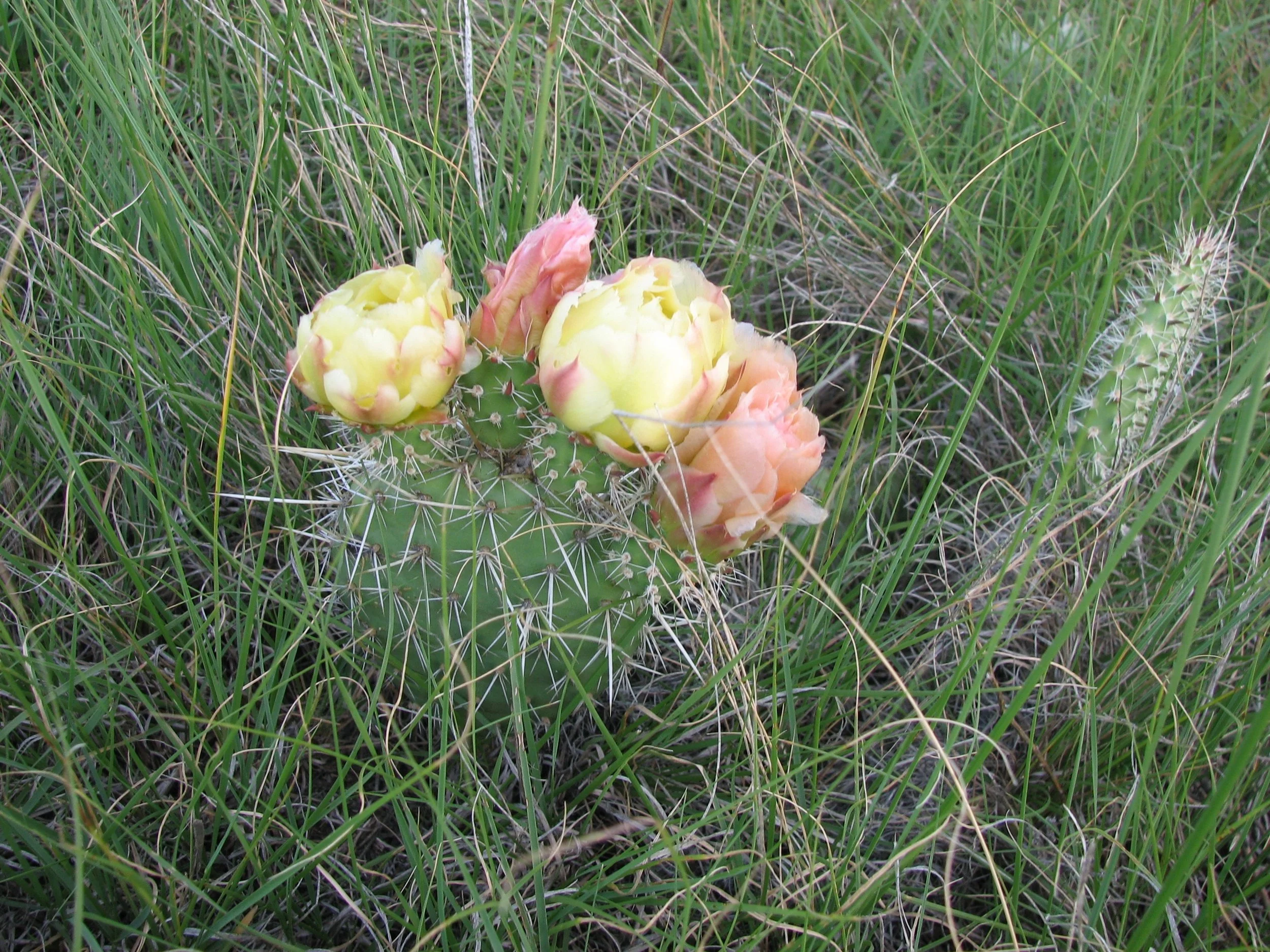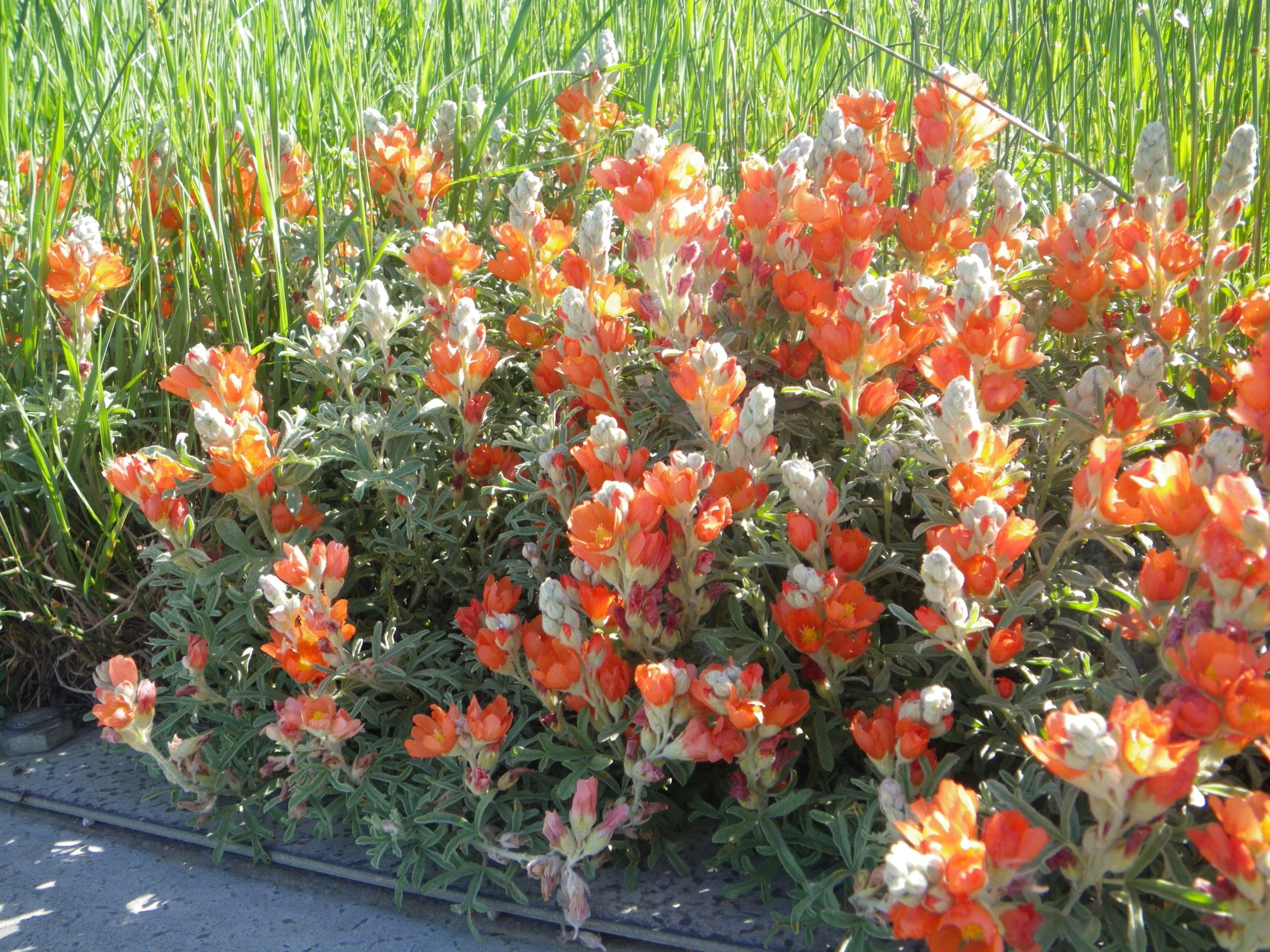This plant’s stiff stems, with narrow inconspicuous leaves, account for its common name. One bright pink flower head develops at the end of the 15–20 cm tall stem. It grows on ridges and dry areas.
Read MoreGrowing to 60 cm tall on eroded hillsides or dry banks, these thistle-like plants produce fragrant creamy-white flowers with five petals and five petal-like stamens. This explains their name decapetala, or ten petals. The flowers, a dramatic 7–10 cm across, open at night as they are pollinated by moths.
Read MoreThis member of the mint family is easily recognized as such by its square stems. Its distinctive fragrance, similar to the oil of the bergamot orange used to flavour Earl Grey tea, is its other distinguishing feature, and the reason for its common name.
Read MoreThis low growing plant has shiny leaves that look like flat leaved parsley, and bright yellow flowers that form an umbrella-like cluster. It grows on dry, exposed slopes.
Read MoreShowy, sweet-scented white (fading to pink) blossoms, up to 8 cm across open above this low-growing leafy rosette, found on dry hillsides of gumbo or clay soil. Blossoms occur through summer from June to August. The flowers, which are pollinated by moths, open at night, and each blossom lasts only one day.
Read MoreOn eroded slopes in the driest conditions, this cactus with its flat, paddle-shaped segments (12–15 cm across) can spread into a clump that measures 1 m or more wide. The thorns, 1–5 cm long, are dangerous as they can pierce leather, and will cause severe discomfort if stepped on.
Read MoreBlooming early in the season when range grasses are just beginning to grow, pale yellow pea-shaped flowers appear, above basal leaves, on stems 10–50 cm tall. Johnston reports the Blackfoot called this plant “rattle weed”, as the ripe seed pods rattle loudly when shaken, and that the leaves were chewed to alleviate sore throat.
Read MoreFormerly known as Psoralea esculenta, Indian breadroot has bluish-purple pea-shaped flowers densely clustered on stems that are covered with white, silky hairs. A short plant, only 10–30 cm tall, it looks like a stunted lupine. Its scientific name esculentum means edible, and refers to the thick tuberous root—the feature that made this plant important to all people who lived on the plains.
Read MoreBeardtongue flowers are tubular, and have two lips with the top lip divided into two lobes, and the bottom into three lobes. Many species have a sterile stamen that is covered with hair, hence the common name. Smooth blue beardtongue (P. nitidus) is a showy plant with thick leaves covered with a greyish bloom, and flowers that occur in dense clusters at the leaf axils on the top portion of the stem.
Read MoreBlooming as early as April, this wildflower’s common name is appropriate. The plant forms a mat of short, woolly leaves that look like moss, and has typical phlox flowers about 10 mm wide.
Read MoreWidespread and common across prairie grasslands and in the Rocky Mountains, this flower is among the first to bloom in spring. It is distinctively covered with silky hairs, and legend tells that the Great Spirit gave the crocus its fur coat to keep it warm during cold spring nights.
Read MorePrairie coneflower blossoms are composed of a grey to purple central cone or cylinder surrounded by a skirt of yellow “petals”, which are actually individual flowers known as ray florets. Occasionally a form of this plant (R. columnifera var. pulcherrima) occurs where the ray florets are dark bronze instead of yellow.
Read MoreThe word silver in the common name and the scientific name canus refer to the leaves, which are grey-green with a covering of white, fuzzy hair. The bright yellow daisy-type flowers with yellow centres occur in a small cluster at the end of 40 cm tall stems.
Read MoreTypical of the lily family, the leaves of this plant have many parallel veins. They clasp onto opposite sides of the 15–50 cm tall stems. At the tip of the stem, small white flowers appear in a loose cluster. Each flower has six petals, and when the fruit first develops, it is a green berry with six purplish-black stripes.
Read MoreThis little plant is in the iris family, and looks so much like grass it is overlooked when it’s not in bloom. In moist grasslands it grows 10–30 cm tall with a cluster of up to five purple-blue flowers at the end of the stems. Each flower lasts only one day.
Read MoreThis low growing goldenrod is the earliest to bloom. Its smooth, reddish stems are 15–50 cm tall, and the small yellow flowers form a plume shaped cluster near the top of the stem. It grows in dry, sandy soil, and is attractive to butterflies.
Read MoreThis tough little plant can grow where nothing else will—on the edge of gravel roads, eroded hillsides and badlands. The plant with its grey-green leaves spreads by creeping roots, and develops short stems with terminal clusters of orange to brick-red simple flowers, 10–25 mm across.
Read MoreThis inhabitant of dry, open grassland produces many flower heads near the ends of 50 cm tall branches that are often lodged. Each flower has 10–20 white petal-like ray florets about 7 mm long surrounding a yellow centre.
Read MoreGrowing 30–100 cm high, smooth blue aster is common through the prairies. Numerous flower heads, 2–3 cm across with 20 or more blue ray florets, form a branched cluster at the end of the stout, hairless stems. The thick, hairless leaves often have a whitish bloom.
Read MoreThis showy little plant, up to 30 cm tall, has bright yellow flower heads 2–3 cm across, and silvery grey basal leaves. It grows on eroded hillsides and coulees.
Read More
















